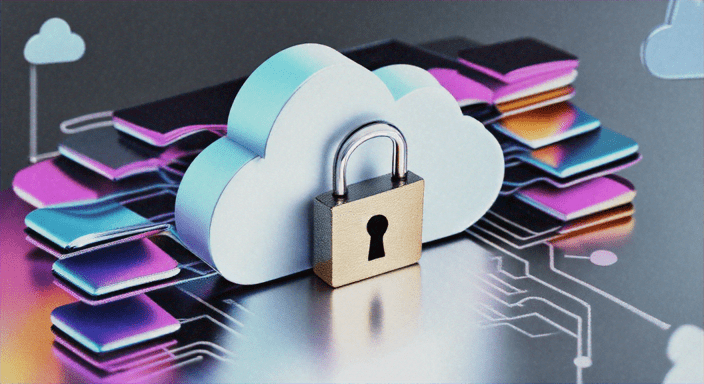In the contemporary digital landscape, the utilization of Security Information and Event Management (SIEM) software has emerged as a fundamental component of robust cybersecurity frameworks. This discourse explores the pivotal function SIEM software serves in the protection of digital assets and infrastructures.

Deciphering SIEM Software
SIEM software amalgamates and scrutinizes activities across diverse resources within an organization’s IT framework. It facilitates real-time scrutiny of security alerts emanating from applications and network apparatus. Through the aggregation and examination of data procured from firewalls, antivirus mechanisms, and intrusion detection systems, SIEM software proffers an exhaustive perspective on an entity’s security condition.
Instantaneous Threat Detection
A paramount advantage of SIEM software resides in its capacity for real-time threat discernment. Conventional security apparatus frequently falters in contending with the intricate stratagems employed by cyber malefactors. Conversely, SIEM software incessantly surveils network comportment and identifies deviations that may presage prospective incursions. This preemptive methodology empowers security cadres to react expeditiously, thereby curtailing detriment and precluding data dissipation.
Incident Response and Stewardship
Efficacious incident retort is indispensable in diminishing the repercussions of security breaches. SIEM software streamlines this procedure by furnishing exhaustive insights into security episodes. It aids in discerning the character and extent of an assault, enabling security operatives to concoct and execute a bespoke retort. Furthermore, automated retorts can be orchestrated to constrain and neutralize menaces, thereby augmenting an organization’s defensive apparatus.
Conformity and Documentation
Adherence to regulatory mandates constitutes a substantial facet of cybersecurity. Numerous sectors are beholden to rigorous compliance criteria such as GDPR, HIPAA, and PCI DSS. SIEM software assists entities in fulfilling these exigencies by preserving meticulous records of all security occurrences and generating exhaustive reports. This not only ensures compliance but also facilitates audits and forensic inquiries.
Augmenting Network Perception
A salient challenge in cybersecurity pertains to the dearth of perspicuity across the entire network. SIEM software addresses this quandary by proffering a centralized platform that amalgamates security intelligence from manifold origins. This panoramic vista empowers security cadres to pinpoint frailties and surveil user activities efficaciously. Enhanced perception is critical for detecting advanced persistent threats (APTs) and other sophisticated assaults that may elude conventional security apparatus.
Synergy with Other Security Instruments
SIEM software is engineered to coalesce seamlessly with assorted other security apparatus, enhancing the overarching security infrastructure. By correlating data from firewalls, antivirus software, and intrusion detection systems, SIEM furnishes a unified methodology for threat detection and retort. This integration ensures that all dimensions of an organization’s security ecosystem operate in concert, engendering a more formidable bulwark against cyber menaces.
Scalability and Adaptability
In the present-day fluid commercial milieu, scalability and flexibility constitute quintessential attributes of any security resolution. SIEM software is remarkably pliable, capable of scaling to accommodate the exigencies of burgeoning organizations. It can be tailored to address specific security requisites, rendering it a versatile instrument in an ever-evolving threat topography. This scalability ensures that enterprises can uphold robust security measures as they expand their operations and IT infrastructure.
Sophisticated Analytics and Machine Learning
Contemporary SIEM resolutions harness advanced analytics and machine learning to augment threat detection capabilities. By dissecting prodigious volumes of data, these technologies can discern patterns and prognosticate potential security incidents. Machine learning algorithms perpetually refine themselves over time, honing their ability to detect anomalies and diminishing the incidence of false positives. This predictive methodology allows organizations to remain a step ahead of cyber malefactors.
Diminishing Mean Time to Resolution (MTTR)
The Mean Time to Resolution (MTTR) is a pivotal metric in cybersecurity, representing the average duration taken to resolve security incidents. SIEM software significantly curtails MTTR by automating numerous facets of threat detection and retort. With real-time alerts and automated workflows, security cadres can expeditiously address and mitigate threats, minimizing downtime and reducing the overall impact of security incidents.
Cost Efficacy
Investment in SIEM software can culminate in substantial cost savings in the long term. By forestalling data breaches and minimizing the impact of security incidents, organizations can eschew the considerable financial losses associated with cyberattacks. Additionally, SIEM software obviates the necessity for multiple standalone security instruments, streamlining the security infrastructure and reducing operational costs.
Challenges and Deliberations
While SIEM software proffers multitudinous benefits, its implementation is accompanied by challenges. The initial configuration and setup can be intricate and time-intensive, necessitating skilled personnel. Furthermore, the efficacy of SIEM resolutions hinges on the caliber of data inputs and the precision of correlation rules. Regular updates and fine-tuning are indispensable to ensure optimal performance.
Case Analyses and Instances
Numerous organizations have successfully implemented SIEM software to bolster their cybersecurity stance. For example, a prominent financial institution deployed SIEM to monitor and analyze transaction data in real time, significantly diminishing fraud and unauthorized access. Similarly, a healthcare provider utilized SIEM to comply with HIPAA regulations, safeguarding patient data and ensuring privacy.
The Prospect of SIEM Software
The future of SIEM software appears auspicious, with incessant technological advancements propelling its evolution. The integration of artificial intelligence (AI) and machine learning will further enhance the predictive capabilities of SIEM resolutions. Additionally, the escalating adoption of cloud-based SIEM services will render advanced security accessible to smaller organizations, democratizing cybersecurity.
Conclusion
In summation, SIEM software stands as a cornerstone of modern cybersecurity, providing real-time threat detection, incident response, and compliance reporting. Its capacity to enhance network visibility, integrate with other security instruments, and leverage advanced analytics renders it an invaluable asset for organizations. As cyber threats persist in evolving, the adoption of SIEM software will be crucial in safeguarding digital infrastructures and ensuring business continuity.





